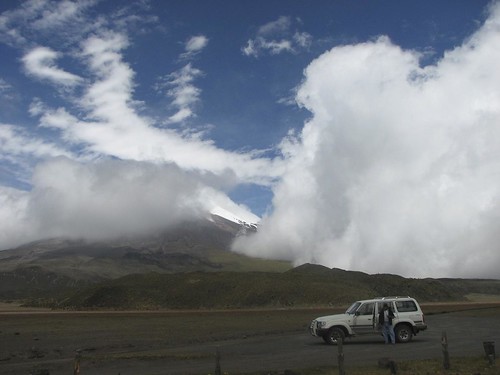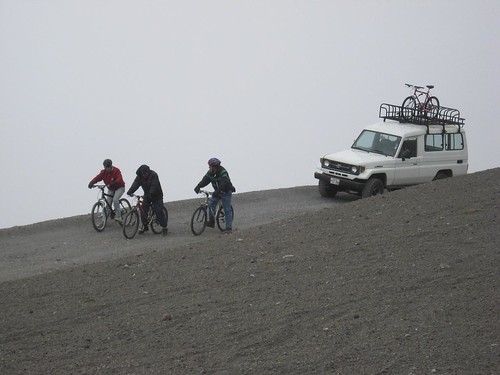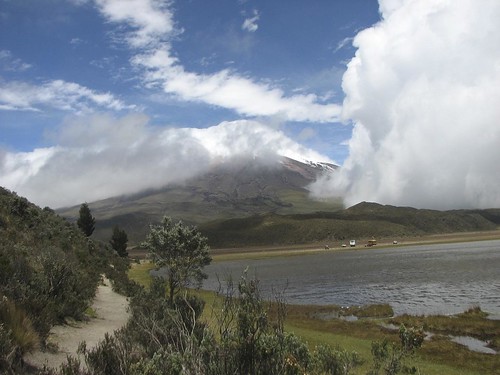Heating Up
“It’s global warming.”
Until that moment, our native guide at Cotopaxi National Park had only spoken to us in spanish. But she had learned enough english to point out the environmental threat to Ecuador’s second highest peak.
Pictures in the national park’s museum clearly showed how far the snows had receded over the past thirty years.
On the day we visited, mountain bikers began their descent of the mountain from a point covered by snow just a few decades ago.
But the snow isn’t the only thing to have disappeared from Cotopaxi National Park.
Twenty years ago, orange-bellied Atelopus frogs were a common sight around Laguna Limpiopungo, near the base of Cotopaxi. Today they are nearly gone.
Scientists have offered several theories to explain the disappearance of the frogs, including a degeneration in air quality and an increase in UV-light levels.
But it was a 2006 study by Nature that largely solved the riddle. It showed that a fungus was wiping out the frogs – and that the fungus was thriving because of global warming.
I doubt our native guide read Nature, but she knew what was threatening her livelihood – and one of the best hiking and trekking destinations in the world.
With her limited english, I couldn’t tell if what she said next was a question about the climate or the condition: “How does it change?”






1 comment
[…] indigenas tour guide described the impact to the local ecosystem and showed us the spot on the mountain where the snow line once was. Today mountain bikers begin their decent of the […]